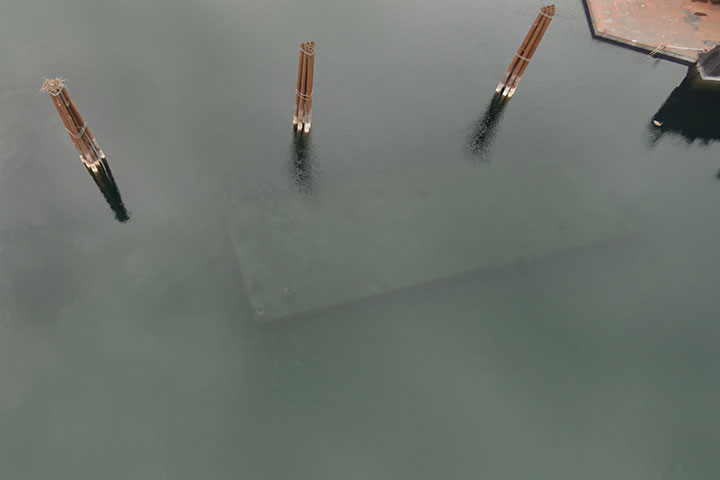April is upon us and the Lake, while still low, is rising. I had hoped to obtain overhead pictures of a sunken barge earlier, but lowest water and a calm surface did not coincide, so I failed to get the best view. Maybe I can do better next year. For now, both the Lake level and its turbidity are rising as a result of the added inflow from snowmelt in the mountains.
The barge has long been known to the Underwater Archaeological Society of British Columbia and to local divers. Indeed, Rob Wyatt has posted a video about diving to it. However, I was unaware of the barge until I accidentally spotted it while exploring flicker cavities at the adjacent floating drydock at Sunshine Bay on the West Arm.
Before the railway was completed along the shore in 1901, barges were used to move freight cars down the Lake. However, those barges were over 200 feet (61 metres) long. This barge is much smaller. Bill Meekel tells me that:
barges of this size (probably 60 ft x 20 ft [18m X 6m]) were commonly used by the CPR Lake & River Service for moving freight and ice breaking. For ice breaking, the barge would be tied to the front of a paddlewheeler and pushed ahead of the vessel. It would break the ice by being pushed through it or it would ride up on the ice to break it. The smaller barges were made of wood.
The video reveals that this barge is, indeed, made of wood. So, this sunken barge appears to be a remnant of an earlier age of steam-driven tugs and sternwheelers moving freight along the Lake.
Even more interesting is that, if it had been used for ice breaking, the barge speaks of a time before the dams of the Columbia River Treaty (1964) tamed the extremes of the high water of spring and the low water of winter.
Prior to the dams, the waters of the West Arm might freeze from one shore across to the opposite one. My mother spoke of the winter of 1934-35 when she (and others) were able to walk across the Lake at Nelson. Yet, at present, the most ice the Lake gets is a bit hugging the shore. The difference is not the result of global warming; the change predates any marked warming. The difference is the result of the dams. By replacing the older winter’s shallow and gentle flow with the present deeper and faster flow, surface ice has been inhibited.
This sunken barge recalls an earlier age on the Lake of steam technology and frozen waters.
Barely discernible at the centre of the picture is a rectangular barge on the floor of the Lake. I don’t know when it was built or when it sank, but it is clearly from a different era.
